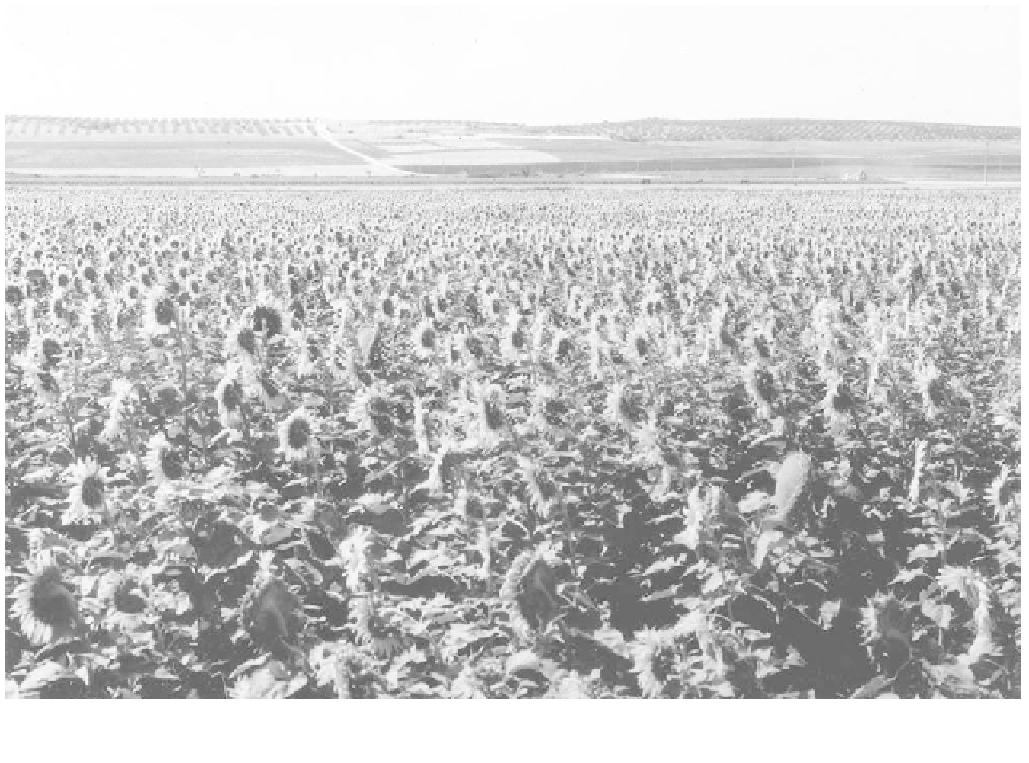Agriculture Reference
In-Depth Information
FIGURE 24.2
Monoculture sunflowers grown for vegetable oil production, Andalucia, Spain.
Prioritizing specific cash crops
over diverse, local crops has altered greatly the agricultural landscape in many parts of the world.
year's production quotas — be given priority. Sustain-
ability, in contrast, requires that planning and decision
making take place in a time frame much longer than most
economic programs ever consider. The environmental
impacts of current practices and policies will be fully
manifested only over a time span of many decades; like-
wise, the restoration of damaged ecosystems and the
recovery of unproductive, degraded agricultural land will
require decades if not centuries.
Another problematic aspect of market-economy
forces is that the negative effects of economic activity on
the environment, on people's health, and on people's live-
lihoods are bracketed off as “externalities.” They are not
counted as costs in the agricultural economic calculus, and
are thus disregarded.
If agriculture is to continue as an economic activity
into the long-term future, the economic context in which
it is practiced must undergo a fundamental shift (Ikerd,
2005). We must recognize, first of all, that a healthy eco-
nomy ultimately depends on a healthy environment — that
agricultural production has an ecological foundation that
can be destroyed. Then we must fashion an economics of
sustainability, one that rewards ecologically sound prac-
tices in the marketplace, values the natural ecosystem
processes that contribute to agricultural production, and
takes into account now-externalized costs. The alternative
food networks described in Chapter 23 are an important
— and already-existing — part of this new economics.
Under the criteria of sustainability, long-term conse-
quences become as important — or more so — than short-
term economic gain, and nothing is considered an externality.
Natural resources, usually exploited by agriculture, are
treated as finite social goods. Inputs carry a purchase price
based not only on the costs of their production, distribu-
tion, and application, but also on their environmental and
social costs. Government food policies are based as much
on their contribution to sustainability as on their ability to
lower food prices (Figure 24.3).
B
EYOND
T
ECHNOLOGICAL
F
IXES
Part of the reason it is so easy for people to ignore the
long-term time frame and the future consequences of our
actions is that we have an abiding faith in technology. We
trust that progress in technology will always solve our
problems. In agriculture, the best example of our naive
faith in technology is the Green Revolution. Through the
development of higher-yielding plant varieties, Green

Search WWH ::

Custom Search